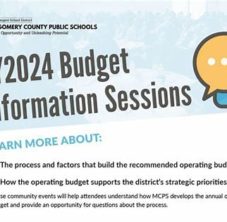MoCo360 released a blockbuster list of the top 100 earners at MCPS. The most outrageous, elitist, and abominable aspect of this list is that I’m not on it. Outside of that, there really isn’t anything wrong. It really is OK that the school Superintendent Monifa McKnight made $342,400/year.
Let’s do some critical analysis. Those top 100 earners draw a total annual salary of $19.4 million. They also enjoy a rich, lifelong, defined package of pension and medical care until their last day in a North Carolina assisted living complex. Yes, I am jealous, but we all need to rise above our baser emotions.
Recall that the school’s fully funded operating budget is $3.2 billion. (As always, this doesn’t include the capital expense budget, another $4.9 billion.) As a percentage, those top earners represent only 0.6% of the operating budget. Let’s throw that onto a pie chart to see how insignificant it is.
Let’s suppose we cap salaries at MCPS at $200,000. Those top 100 earners will earn $18.7 million, and that’s still 0.6% of the budget. Let’s suppose we eliminate those positions entirely (and Damon Monteleone, with title Associate Superintendent for Well-Being, Learning, and Achievement, sounds like a good candidate), we are still faced with a school budget that rounds to $3.2 billion.
The problem with the school’s finances is the incentive structure. We just saw how Superintendent Monifa McKnight was fully paid and compensated for, among other things, allegedly protecting and even promoting a predator. She wasn’t incentivized to protect her own employees: she was incentivized to survive a bureaucratic jungle. Such a low moral standing isn’t tolerated in the business world: last year 3M’s CEO was fired for inappropriate conduct.
A better incentive structure is to tie these bureaucrats’ pay to actual outcomes. The outcomes I propose are a) educational value and b) cost efficiency. Measuring educational value is admittedly a difficult topic, but parent and student satisfaction is as legitimate a measure as any. Granting school vouchers to families so they can choose which school to attend will immediately identify which schools are providing value and which aren’t. Regarding cost efficiency, we’ve written before that fully 20% of the district’s operating budget is devoted to administration. Reducing that burden to 15% is a savings of $160 million, and that’s a meaningful 5% reduction in the school’s budget.
So, Monifa McKnight, all is forgiven. Come back to MCPS. We’ll double your salary, double your attorneys’ salaries, give you an expense account for clothes and travel, but with a different incentive structure: school vouchers and cost containment.





